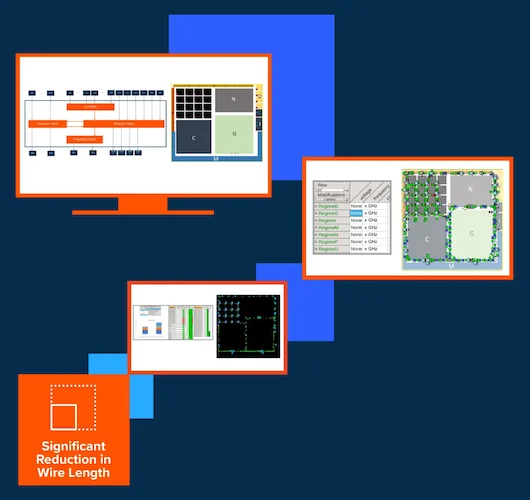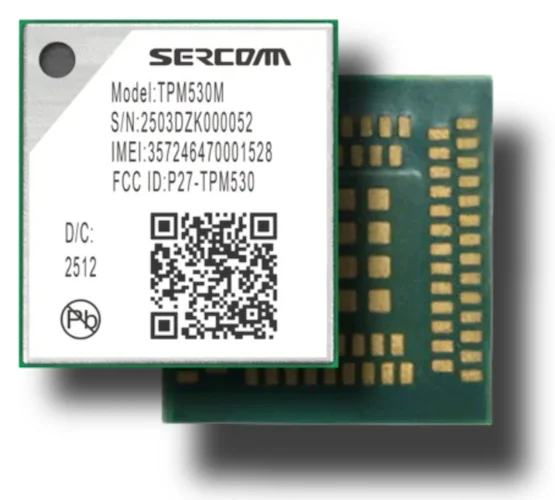From high-performance EVs to low-power IoT modules and next-gen AI chiplets, three recent collaborations showcase how semiconductor innovation is driving new design frontiers.
As system demands grow more complex, engineers are turning to highly specialized silicon to meet power, performance, and integration goals. Recent design wins from AMD, Xiaomi, and Sercomm highlight how hardware partnerships are enabling next-gen platforms to push past conventional constraints.
Arteris NoC IP Lands in AMD’s AI Chiplets
In a move that underscores the rising complexity of AI-centric chiplet architectures, AMD has selected Arteris’ FlexGennetwork-on-chip
As AMD looks to expand its AI portfolio with performance-driven, modular silicon, Arteris’ IP will automate and accelerate SoC interconnect design in an industry that increasingly hinges on fast, flexible chiplet iteration.

Arteris FlexGen has already shipped in billions of units. Image used courtesy of Arteris
For Arteris, the deal is a milestone validation of its strategy to dominate the interconnect IP space. The company’s FlexGen technology, already shipped in billions of units, now enters a new tier of visibility by supporting a top-tier semiconductor player in one of the fastest-growing market segments.
AMD's vice president of silicon design engineering, Mydung Pham, called the collaboration key to enabling “the best end-to-end AI compute portfolio in the industry,” while Arteris CEO K. Charles Janac emphasized the scalability of FlexGen in chiplets containing up to 20 discrete interconnects. As AI workloads scale and SoC disaggregation becomes the norm, this partnership positions Arteris to influence the design direction of future heterogeneous compute systems across data centers, edge AI, and beyond.
Xiaomi Taps Onsemi’s SiC for YU7 Electric SUV
Xiaomi recently launched its new YU7 all-electric SUV line, incorporating an advanced 800-V drive platform powered by Onsemi’s EliteSiC M3e silicon carbide technology. The collaboration between Xiaomi and Onsemi has enabled the integration of SiC power devices into the YU7’s traction inverter, resulting in a more compact, thermally efficient, and cost-effective drivetrain.
The YU7 series consists of three models with peak power outputs ranging from 295 HP to 681 HP, and driving ranges from 550 km to 835 km. Notably, the YU7 Max features dual motors, 800-V fast charging, 0–100 km/h in 2.7 seconds, and supports Xiaomi's Pilot Pro autonomous driving system.

The Xiaomi YU7 all-electric SUV line-up. Image used courtesy of Xiaomi
Onsemi claims its EliteSiC M3e devices, which are known for industry-low on-resistance and high thermal performance, enabled this EV to achieve both class-leading efficiency and acceleration. The collaboration strengthens Onsemi’s position in the EV market, where it now ranks second in global SiC power device sales. Looking ahead, Onsemi plans to ramp up SiC production capacity, including a transition to eight-inch wafer manufacturing by 2025, and continue expanding through long-term supply agreements and recent acquisitions to support EV platforms like Xiaomi’s in the years to come.
Sercomm Shrinks Cellular IoT with Nordic-Powered Module
As the cellular IoT market shifts from legacy technologies to more efficient, space-conscious solutions, Sercomm and Nordic Semiconductor have partnered to launch the TPM530M, a dual-mode LTE-M/NB-IoT module designed for modern battery-powered deployments. Built on Nordic’s nRF9151 reference design, the module integrates the nRF9120 SoC, Nordic’s power management and RF front-end, and Sercomm’s high-volume manufacturing into a compact 14.55 mm x 14.51 mm x 1.85 mm package.
Designed for smart meters, asset trackers, shared mobility devices, and urban sensors, the TPM530M offers developers a fully featured cellular platform with GPS, ultra-low power modes (down to 2.7 µA in PSM), and extended operating temperature support—all while preserving Sercomm’s design priority of long battery life and minimal maintenance in remote or embedded systems.

Sercomm’s TPM530M integrates Nordic’s cellular nRF9120 SoC and PMIC. Image used courtesy of Nordic Semiconductor
The collaboration serves both companies' strategic goals: Nordic gains expanded presence through a mature, production-ready module delivered to Sercomm’s global client base, while Sercomm gains exclusive access to a silicon platform “available to selected high-volume partners,” according to Nordic. With LTE-M positioned as a scalable path forward amid NB-IoT sunset plans by some carriers, the TPM530M's dual-mode flexibility offers customers a future-proof connectivity option.
Both companies point to ongoing development support via Nordic’s nRF Connect SDK and roadmap extensions that include 5G RedCap, AI/ML processing, and advanced cryptographic features. The partnership cements a joint position in a rapidly expanding cellular IoT market, forecast to exceed $30 billion by 2030.
-
Tel
+86 180 2549 2789 -
Wechat

 BOM
BOM Cart()
Cart() English
English Russia
Russia Korean
Korean
